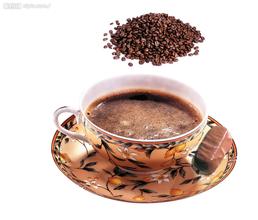Coffee grinder electric or manual good brand recommendation
Coffee grinder electric or manual good brand recommendation introduction
When you find the right powder size, consider the next important factor: uniformity.
The grinding process of each cup of coffee usually takes a few seconds to more than ten seconds. According to the fineness of the grinding powder required by different brewing methods, the grinding machine grinds each coffee bean into a coffee powder with a diameter of about 3500-3500 and a diameter of about 0.05-0.7mm.
When extracting such a large number of coffee particles, the effect of uniformity on the product is extremely critical.
What is extraction? The definition of extraction itself refers to a process of substance exchange between coffee powder and water.
Put aside what we often say, "if you don't grind evenly, you can't make coffee well." from a more macro point of view.
The taste of a cup of coffee is originally a combination of thousands of coffee granule extracts.
When the fluctuation value of grinding thickness is large, most of the particles can not reach the uniform degree we want.
As a result, under the same extraction conditions, the coarser coffee particles are more likely to be underextracted, while the finer particles are overextracted in advance.
Therefore, the larger the grinding span of coffee powder is, the more turbid and irritating smell can be tasted.
On the other hand, coffee powder with basically the same size and similar shape is used for extraction.
The taste becomes brighter and stronger, and the performance of flavor characteristics is clearer and consistent.
In Italian concentrated extraction, whether the degree of grinding is uniform or not not only affects the taste of the product, but also determines the success of Italian coffee.
If Italian production is carried out with a bean grinder with poor uniformity, it is easy to make the powder particles distributed in a certain part (or possibly more than one part) of Coffee pressed powder thicker, and the high-pressure water flow will quickly squeeze out of these thinner "vulnerabilities" of pressed powder, creating one or more channel effects so that the local coffee powder is overextracted while the surrounding part is underextracted. In this state of Italian extraction, it will only be a cup of bitter water.
When the grinding quality of a bean grinder is seriously lower than the uniformity required for making Italian style, no matter how fastidious the cloth powder is and no matter how good the powder pressing skill is, it is difficult to successfully make a qualified Italian style. Because the technology of powder distribution and powder pressing itself is based on the premise that the powder is uniform enough.
Therefore, if you want to get a better flavor in the cup,
A well-powdered bean grinder will bring about far more improvement than you can imagine.
Rigidity conditions for determining milling quality (2): fine powder content
Fine powder refers to coffee powder with very fine particles, also known as flour and ultra-fine powder.
Fine powder will inevitably exist in the grinding process.

Important Notice :
前街咖啡 FrontStreet Coffee has moved to new addredd:
FrontStreet Coffee Address: 315,Donghua East Road,GuangZhou
Tel:020 38364473
- Prev

Introduction to the instruction manual of how to use coffee powder ec680 in Delong coffee machine
1 if you are using the Delong coffee machine in the company, it is recommended not to use coffee powder, because if you add no more than 2 tablespoons of coffee powder at a time, it will damage the machine, and adding only one spoonful of coffee powder at a time is too slow for the unit to make coffee; in addition, the taste of coffee powder is not as fresh as coffee made from coffee beans. 2 if you do not expect to use the coffee machine for a long time, it is recommended
- Next

Why the number of coffee machine grindness is smaller and finer-Delon coffee machine grinder is clogged
Why the number of coffee machine grind is smaller and finer-Delon coffee machine grinder jams to adjust coffee beans: this does not seem to have much to do with the automatic coffee machine to adjust the concentration of coffee, but Chen Lei would like to mention by the way, deep-roasted coffee beans are stronger than light-roasted coffee beans, we can also adjust the concentration of coffee by adjusting the roasting degree of coffee beans.
Related
- What is the Philharmonic pressure? How to use Philharmonic pressure to make delicious coffee
- Why does a hand grinder have more fine powder than an electric grinder?
- In addition to the hot mom, what is the difference between the versions of EK43 | ditting and Mahdi ek43?
- What kind of equipment do you need to make coffee by hand? Introduction to novice starter cooking equipment tools
- Espresso needs to be ground how thick and thin scale entry Italian Coffee Machine Bean Grinder investigation and Grinding course
- How much does it cost to open a small private cafe? How much does it cost to learn coffee? How to operate it?
- The difference between the flavor characteristics of hand-brewed coffee and coffee maker is hand-brewed coffee really better than coffee maker? Can I use a coffee machine to make coffee beans by hand?
- The difference between 01 and 02 of hario v60 filter cup what is the difference between 01 and 02 filter cup opening and cooking flavor
- What's the difference between the smart cup and the French kettle? Which is better, the French kettle or the Smart Cup?
- What's the difference between a smart cup and a V60 filter cup? The difference between the taste of smart cup and hand-brewed coffee

